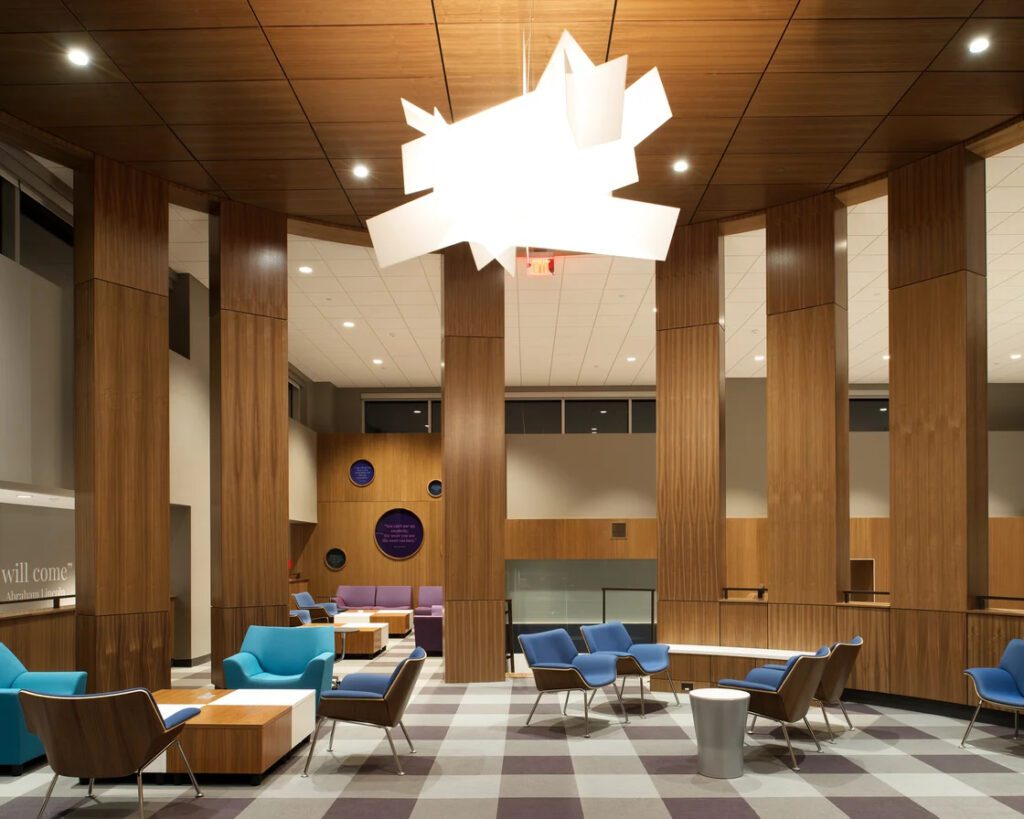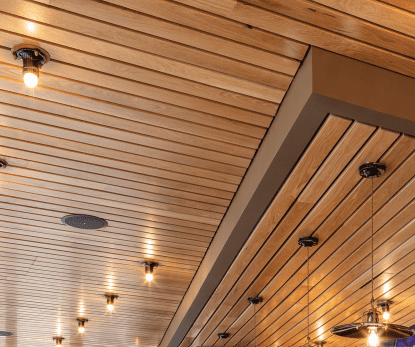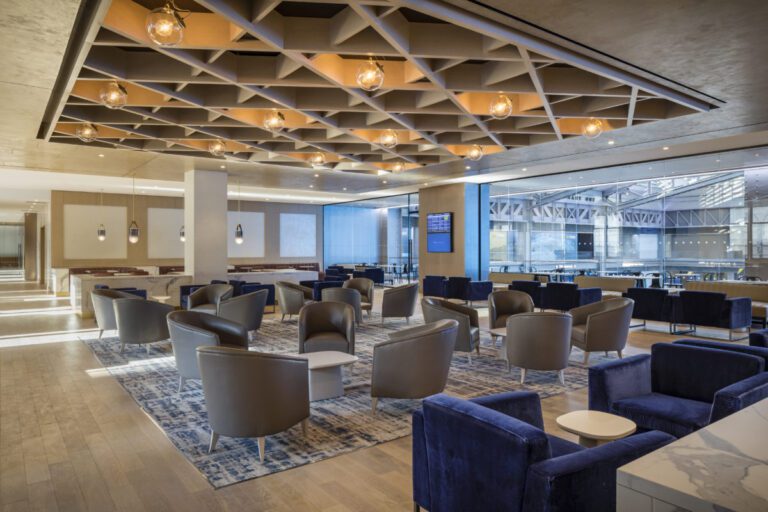How often do you take a moment to consider the acoustics of the room that you’re in? When a space has poor acoustics, it’s often hard to hear the person you’re conversing with over the other sounds in the room. Or, sounds may have a sharp, unpleasant quality that makes you wish you could turn down the volume on the entire room.
When acoustics are excellent, they often go unnoticed. But great acoustics matter, and they don’t happen by accident. Indoor sound quality is an investment that requires great materials and thoughtful design.
At Rulon International, we’ve been leaders in the wood panel manufacturing industry for over 30 years. In the sections below, we’ll share a few insights regarding acoustic design in commercial spaces.
The Importance of Acoustics in Large Commercial Spaces
Acoustic control is a major factor in whether or not a room is a pleasant place to spend time. When it’s easy to converse without raising your voice or being distracted by nearby noise, individuals are more likely to relax and engage in positive interactions.
Studies suggest a direct relationship between a pleasant sound environment and the amount of time and money that customers are likely to spend in stores. Likewise, in settings like boardrooms, decision-makers may be more likely to reach a positive consensus in a room with pleasant acoustics.
In large commercial spaces, acoustic control is challenging. Ample open space creates room for echoes and sound interference. In these spaces, it’s essential to use materials and design strategies that absorb enough sound waves to create functional, pleasant soundscapes.
Acoustic Benefits: Wood vs. Other Common Building Materials
Materials that are helpful for acoustic control are those that effectively absorb sound waves and reflect warm, pleasant tones throughout a space. Let’s compare the reflective and absorptive properties of wood with those of a few other common building materials.
Wood
From guitar makers to architects, wood is treasured for its acoustic properties. The cellular structure of wood is naturally conducive to transforming sound waves into the sort of tones that human ears enjoy.
Compared to materials like metal and glass, wood is softer and more porous. Therefore, sound waves that strike wood are absorbed and diffused, rather than directly and harshly reflected.
Combined with proper design principles, wood surfaces reduce echo and create a warm, pleasant sound environment.
Metal
Metal surfaces are smooth and hard, resulting in direct reflection of sound waves. In rooms with significant metal surface coverage, sounds are typically bright and echoes may be harsh and unpleasant.
Although metal is effective for blocking sound, it doesn’t absorb sound and therefore isn’t a good standalone material for either soundproofing or indoor acoustics. However, when used in conjunction with other materials, such as wood, metal can play a role in acoustic treatment. For example, metal ceiling baffles with acoustic padding are sometimes used to improve acoustic control in large spaces.
Glass
Glass is highly reflective of sound. As a result, spaces with large glass surfaces, such as atriums or lobbies, often pose significant acoustic challenges. Sound reflectivity in these places may cause sharp, clear echoes. This sort of acoustic environment may be unpleasant and disruptive.
Some manufacturers use a glaze to make special “acoustic glass” that’s more sound-absorbant than regular glass. Acoustic glass is primarily used for soundproofing, rather than for improving the acoustic quality of a space.
Concrete
Concrete is among the world’s most widely used building materials, thanks to excellent durability, strength, and availability. Concrete is also a good soundproofing material because it’s hard, dense, and reflective. On the other hand, concrete doesn’t absorb much sound. As a result, concrete rooms tend to produce prolonged echoes and a “cold” sound character.
For buildings that require concrete with enhanced acoustic qualities, there are specialty porous concretes designed to absorb more sound waves.
Pros and Cons of Different Woods
Woods vary widely in availability, price, appearance, and functional qualities. Softwoods like cherry and oak are less dense and thus absorb more sound. Meanwhile, hardwoods like cedar and spruce may be slightly more reflective. However, most commercial wood species are excellent acoustic materials, especially in the hands of expert manufacturers and designers.
Along with factors like availability, price, appearance, and maintenance needs, sustainability is another factor that varies across wood species. Sustainable woods are those that are grown and harvested with a plan in place for maintaining the long-term health of the source forest. At Rulon, our commitment to sustainability includes the use of recycled content and support for sustainability certification programs.
Designing for Acoustics: Wood Panels in Action
Acoustic design with wood panels is both an art and a science. This involves the choice of wood, the design of individual panels, and the configuration of the entire system. The best panel systems emphasize both acoustic control and aesthetic beauty, along with factors like maintenance and longevity. For design inspiration, check out Rulon’s project gallery.
Customization: Tailoring Wood Panels to Specific Acoustic Needs
Large commercial spaces present unique design challenges and require bespoke solutions. At Rulon, we make an extensive selection of acoustic wood panels and offer custom solutions for any project. Customization involves unique designs and configurations along with factors like wood selection, panel thickness and dimensions, and tailored solutions for unique challenges.
Wood Panel Systems for Aesthetic and Acoustic Beauty
At Rulon International, we manufacture wood ceiling and wall panel systems for superior acoustic control and aesthetic beauty. With a customer-centric approach, we contribute guidance and expertise that helps designers create unique, spectacular indoor spaces. To learn more, schedule a discovery call with our team today.




